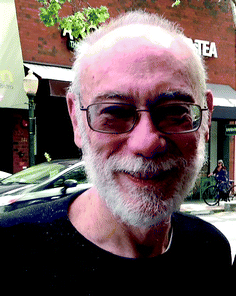Obituary for Prof. Paul Dubin
Sarah L.
Perry
 a and
David A.
Hoagland
a and
David A.
Hoagland
 b
b
aDepartment of Chemical Engineering, University of Massachusetts Amherst, Amherst, MA 01003, USA
bDepartment of Polymer Science & Engineering, University of Massachusetts Amherst, Amherst, MA 01003, USA
First published on 3rd October 2018
On May 23rd, 2018, Paul Dubin, Research Professor of Chemistry at the University of Massachusetts Amherst, passed away at the age of 77. Dubin was born in 1941 in New York City to Carolyn and George Dubin. He graduated from the Bronx High School of Science, City College of New York, in 1962, and received his PhD at Rutgers University in New Jersey in 1970 under the supervision of Ulrich P. Strauss. He went on to postdoctoral studies with Frank E. Karasz at the University of Massachusetts Amherst and David A. Brant at the University of California, Irvine from 1970–1972. Dubin worked as a research scientist at Dynapol, Memorex Corp., and Clairol Research Laboratories before joining the faculty in the Department of Chemistry at Indiana University–Purdue University Indianapolis, where he remained for most of his professional life. In 2005 Dubin returned to the University of Massachusetts Amherst as a part-time Research Professor.
Dubin spent his career investigating the characterization and charge-driven assembly of polymers, proteins, and other macro-ions. In later years, his work centered on understanding the electrostatic and entropically-driven liquid–liquid phase separation known as complex coacervation, a phenomenon discovered in the early days of polymer science and mostly neglected afterwards. Dubin was at the center of the topic's revival a decade ago. He investigated coacervation across synthetic- and bio-polymers, colloids, charged surfactants, and proteins, with potential applications ranging from the purification of monoclonal antibodies to ingredient delivery in foods. Dubin's fundamental efforts in electrostatic self-assembly led to sustained interests in the realm of biochemistry and biophysics. He was fascinated by the binding interactions between proteins (which have defined chemical sequences) and glycosaminoglycans (which appear to have random sequences). Of particular interest was the relationship between the glycosaminoglycan heparin and the protein anti-thrombin, in relation to angiogenesis and blood clotting. Dubin argued that the diversity of binding opportunities presented by glycosaminoglycans could support selective interactions without the need for sequence specificity. Another key discovery was charge-driven protein complexation on the “wrong side” of the isoelectric point, which he explained as a consequence charge “patchiness”. Through numerous collaborations, extending worldwide, he quantitatively connected state-of-the-art physical characterizations with advanced modeling.
In addition to close, hands-on involvement in his own lab's experimental research, Dubin believed very strongly in bringing the scientific community together. He spearheaded numerous special symposia and edited many books and journal issues focused on topics related to polyelectrolytes, polymer characterization, and complex coacervation.
Dubin was an outstanding role model for both students and colleagues. He had a close mentoring relationship with all of his students, helping them to gain not just lab skills but also skills for building professional networks and conducting themselves in the broader research community. He set up collegial, stimulating, and scientifically challenging working conditions for his 31 graduate students (21 MS, 10 PhD, and at least 2 of whom have gone on to become faculty members) and more than 20 postdoctoral research associates (at least 10 of whom went on to a career in academia). He also sponsored numerous visiting scientists, many from overseas, and perhaps most significantly, he sponsored (and personally supervised) the early research experiences of innumerable undergraduate and high school students. He took great pride in watching the latter advance successfully up the chemistry research ladder using the skills they first gained working with him.
Dubin's more than 200 publications, four patents, and eight books are a testament to his love of science and the people around him.
Dubin was married to his wife, Nancy, for nearly 48 years, and they had one son.
| This journal is © The Royal Society of Chemistry 2018 |

